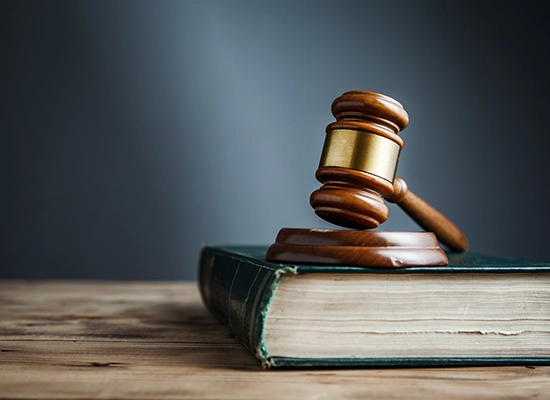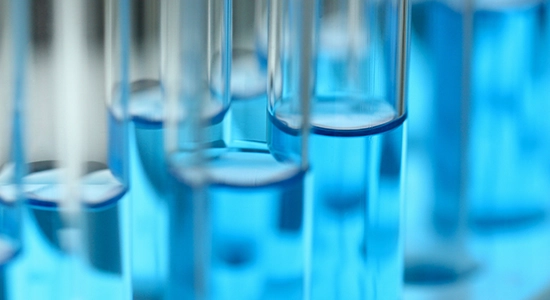Solid Waste Testing Services
Solid waste sample matrices can be challenging due to the classification of solid waste facilities, including municipal solid waste, hazardous waste, industrial waste, and radioactive waste. The Pace® national network of labs can meet the needs of any solid waste project, from routine waste classifications, to complex TCLP tests, to large toxicity determinations.
Solid Waste FAQs
What Is Solid Waste?
RCRA defines solid waste as any garbage, refuse, or sludge from a wastewater treatment plant, water supply treatment plant, or air pollution control facility as well as any other discarded material, resulting from industrial, commercial, mining, agricultural operations, or community activities. This can include household trash, industrial waste, construction debris, agricultural byproducts, and more. Under RCRA, the definition of solid waste is not limited to wastes that are physically solid. Solid wastes can be liquid, semi-solid, or contain gaseous material.
What Is Hazardous Waste?
The EPA, which regulates hazardous waste under RCRA Subtitle C, considers waste hazardous waste if it is dangerous or potentially harmful to human health or the environment. Hazardous waste can be liquids, solids, gases, or sludges and can be discarded by household, industrial, or commercial products such as oil, paints, certain electronics waste, cleaning fluids or pesticides, or the by-products of manufacturing processes. Only materials that meet the definition of solid waste under RCRA can be classified as hazardous wastes, which are subject to additional regulation.

RCRA Three Hazardous Waste Handler Classifications
RCRA is considered a “cradle to grave” system because it regulates the handling of hazardous waste from creation to disposal. This ensures that hazardous waste is handled properly and does not contaminate the environment. There are three hazardous waste handler classifications:
- The producer who creates the hazardous waste
- The transporter, who transports the hazardous waste to the ultimate disposal site
- The ultimate disposal site is a treatment, storage, and disposal facility (TSDF)
How Is Solid Waste Regulated?
In the United States, all levels of government – federal, state, and local – are involved in regulating solid waste. RCRA acts as the framework with three comprehensive programs.
RCRA Subtitle C establishes a system for controlling hazardous waste from generation through disposal ("cradle-to-grave"). This program delineates the criteria used to determine hazardous waste and establishes requirements for producers, transporters, and disposal facilities. The Department of Transportation’s Pipeline and Hazardous Materials Safety Administration is responsible for regulating the transport of hazardous materials.
RCRA Subtitle D establishes a system for controlling primarily non-hazardous solid waste, such as household waste. The program provides the states and local governments with guidance, policy, and regulations for the efficient waste management.
RCRA Subtitle I regulates toxic substances and petroleum products stored in underground storage tanks (UST). The program establishes requirements for the design and operation of USTs aimed at preventing accidental spills.


Handling Hazardous Solid Waste
RCRA places the responsibility on waste generators to perform hazardous waste analysis. The requirements are determined by the waste generator category, which is defined by the volume of hazardous waste generated. If deemed hazardous, waste must be treated as such at every point in its lifecycle. Noncompliance can result in steep state and/or federal penalties.
The waste generator category and waste characterization determines:
- Handling procedures
- Storage limits
- Hazardous waste disposal techniques
- Record-keeping requirements and reporting
- Staffing/personnel
- Solid Waste Treatment Rules
Waste Generator Categories
The EPA classifies solid waste generators into three categories based on the quantity of waste generated.
Large quantity generators generate more than 1000 kilograms (kg) of hazardous waste/month or more than 1 kg of acutely hazardous waste (P-waste code) per month. LQGs are fully regulated and must comply with all generator requirements indicated.
Small quantity generators (SQG) generate between 100 and 1,000 kg/month of hazardous waste and accumulate no more than 6,000 kg of hazardous waste on-site at any one time.
Conditionally exempt small quantity generators generate less than 100 kg/month non-acute hazardous waste per calendar month or less than 1 kg/month of acutely hazardous waste. CESQGs can never accumulate more than 1,000 kg of hazardous waste or greater than 1 kg of acutely hazardous waste at any time.

How Is Hazardous Waste Characterized?
A solid waste not specifically listed as hazardous waste from non-specific or specific sources or otherwise excluded by statute is considered hazardous if it meets one or more of the following characteristics as defined in 40 CFR Part 261 Subpart C.

When extracted according to procedures defined in EPA SW-846, the waste produces an extract that contains listed contaminants above the Regulatory Level cited in the regulation.
- A defined liquid with a flash point <60oC
- A non-liquid that burns when ignited as defined
- An ignitable compressed gas as defined
- Aqueous with a pH <2 or >12.5
- Liquid that corrodes steel at >6.35mm/y
- Unstable and readily undergoes violent change without detonating
- Reacts violently with water
- Generates toxic gases when mixed with water
- A cyanide or sulfide waste that on exposure to pH conditions between 2 and 12.5 can generate toxic gases
- Is capable of detonation or explosive reaction if subjected to a strong initiating source or if heated under confinement
- Is readily capable of detonation, explosive decomposition or reaction at standard temperature and pressure
What Is Toxicity Characteristic Leaching Procedure (TCLP)
The Toxicity Characteristic Leaching Procedure (TCLP) is a soil sample extraction method for chemical analysis used to determine whether a material is characteristically hazardous (D-List). It is employed as an analytical method to simulate the process of leaching through a landfill. While it is one of the more common hazardous waste tests, TCLP is not a simple process.

Pace® TCLP Center Of Excellence
The world generates about 400 million tons of hazardous waste annually. Responsible businesses are concerned with adhering to regulatory standards and laws to avoid stiff penalties and fines, not to mention degradation of the environment. In-depth knowledge of the chemical components within contaminated sludge and solid waste is necessary for appropriate remedial action to minimize health risks and environmental pollution.
Regulations require facilities producing this waste to know its composition and manage it properly to protect the health of their employees, the environment, and the public. RCRA specifically requires that industrial and other waste be characterized following testing protocols published by the EPA. Toxicity Characteristic Leaching Procedure, also known as TCLP, is one of these tests, and it is not a simple process. In this blog learn why Pace® dedicated a lab to this procedure.
Why Select Pace®
Pace® has provided solid waste testing for more than three decades and has deep experience gained from years of working with landfills and waste management organizations.
EXPERIENCED ANALYSTS
FAST RESULTS
THE MOST ADVANCED METHODOLOGIES
Additional Resources
Need to find a lab that can handle your unique requirements?
Contact us directly or download our list of environmental certifications across our network.
When disaster strikes, the Pace® Environmental Emergency Response Team is here to help you act fast.